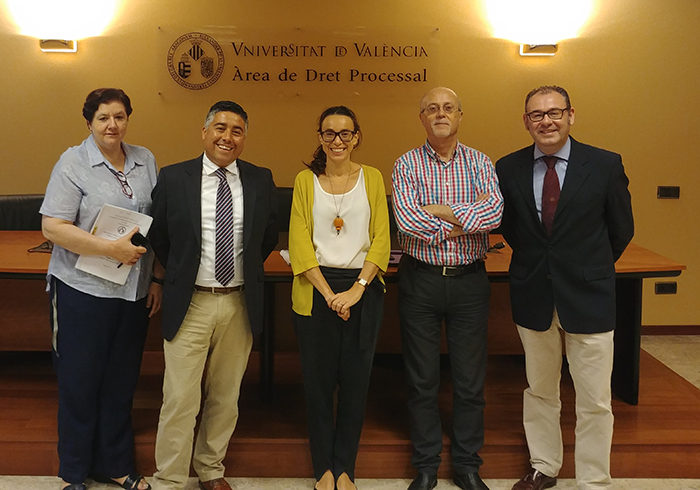
The solution of conflicts in the workplace turns out to be the object of the present Master’s Degree Final Project (TFM), evidencing the existing solutions to these conflicts, and how ADR types were treated by Law 20,940.
12 july 2019
Title: ADR mechanisms, in the Chilean Labor Law, in the light of the law 20,940.
Author: Fernando Sáez Paredes
The solution of conflicts in the workplace turns out to be the object of the present Master’s Degree Final Project, evidencing the existing solutions to these conflicts. And how ADR types were treated by Law 20,940
We begin by differentiating labor disputes, between individual and collective conflict. The first one derived from the relationship between a worker and an employer, which emerge as a general rule when the expiration of the employment relationship occurs. For these, the Law stipulates that such conflicts are submitted to an instance, called individual conciliation. Intended to decongest the State Courts, who are unable to provide a timely solution, give way to the hetero-compositive state intervention of an administrative nature in order to reach agreements between workers and employers.
With regard to the collective conflict, only a reduced sample was covered. Delivering the legislator in order to solve these, a tool called collective bargaining. The one that is part of the so-called autonomous composition of conflicts, which however in our legislation is excessively regulated leaving autonomy only to the decision to negotiate or not to do so. This does not allow the parties in a negotiation to self-regulate, reaching agreements that resolve their conflict, and concluding the collective agreement.
Since the administrative State intervention is not enough, the instance of individual conciliation being overcome, not managing to reach a worker and employer agreement. As the collective bargaining process is also not enough, not resolving this conflict of interests, the State again intervenes through its Courts of Justice, with the inconvenience generated for a negotiation to submit a dispute to the conquered conqueror logic, which causes damage for the future, with respect to those negotiations that will be hindered by the loss of trust due to not solving the conflict with a different logic.
Law 20,940 strengthened the types of conflict resolution within regulated collective bargaining, in order to be an alternative to ordinary justice. Thus, through the establishment of this new system of alternative conflict resolution, both prevention and solution of them are sought. Thus, in this way, both mediation and arbitration, allow the subjects of the employment relationship to find themselves solving their conflict through collective bargaining, access to instances of alternative justice administered and managed by a public institution called Labor Office, other than that provided by the State Ordinary Courts.
Finally, and as conclusions we affirm that there are no universally valid and effective types of labor dispute resolution, as these are a product of each society, which, however, may be influenced by the two existing systems on this matter.
The first used in Anglo-Saxon countries that took collective autonomy, due to the ineffectiveness of ordinary justice in resolving labor disputes that were presented. And, a second so-called state intervention massified by continental Europeans, through which the resolution of conflicts through ordinary courts is enhanced.
The Chilean labor legal system was built on state intervention, ignoring the collective dimensions of labor relations, as well as a poor implementation of ADR types.
In short, we made the following conclusions regarding the ADR system in Chilean labor matters.
- In Chile, arbitrators are considered judges, which does not coincide with the reality of arbitration as an alternative conflict resolution system.
- Regarding mediation, it loses its eminently voluntary character in several of its modalities, so when establishing compulsory mediation, voluntariness loses effectiveness.
- Likewise, the administration of the system of alternative resolution of labor disputes, is delivered in Chile to the Labor Office, which makes it directly dependent on the government. What is negative, due to the latent and permanent possibility of intervention in labor relations.
And with that subtract from the influence of the government of the day, the intentions to influence labor disputes.













